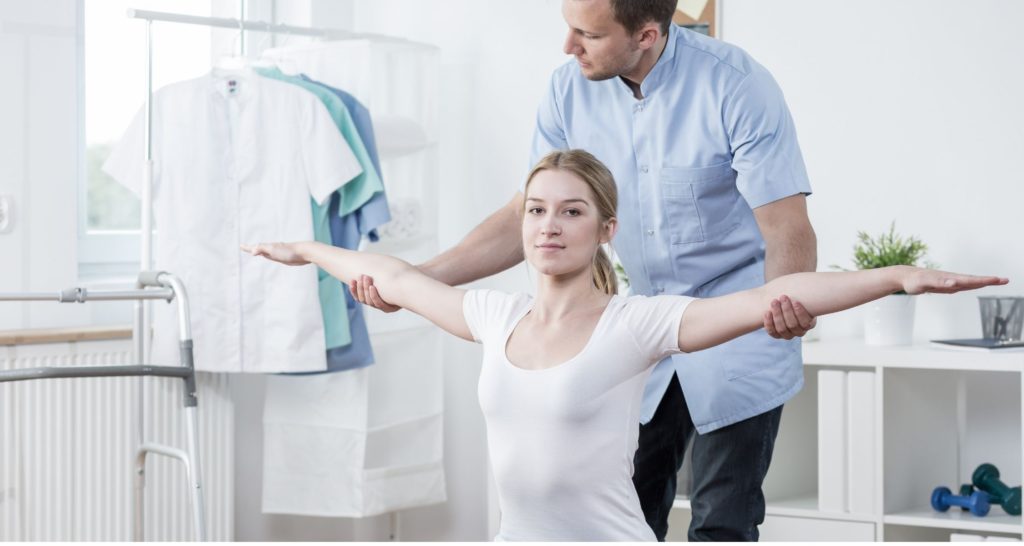What Is Vestibular Rehabilitation Therapy?
Vestibular rehabilitation treats dizziness, vertigo, motion sensitivity, balance, and postural control problems caused by vestibular dysfunction.
Eye stability, motion stability, balance, and postural control are all affected by vestibular impairment. Vestibular rehabilitation targets these areas of pathology or dysfunction. This depends on the pathology and each patient’s unique presentation. When treating this patient group, a thorough knowledge of the vestibular system is required.
What Types Of Issues Can Be Addressed Through VRT?
Patients who are typically referred for vestibular rehabilitation have been diagnosed with one of the following vestibular disorders:
- Vertigo in a benign paroxysmal position (BPPV)
- Vestibular Neuritis/Labyrinthitis Vestibular Neuritis/Labyrinthitis
- Vestibular Hypofunction on a Unilateral Basis (UVH)
- Migraine Vestibular
- Persistent Perceptual Dizziness Due to Postural Dizziness (PPPD)
- Debarquement Malady (MDD)
- Cervicogenic Vertigo
- Suffering from Post-Concussion Syndrome (PCS)
- Neurological disorders (i.e. stroke, traumatic brain injury)
- Vestibulopathy with Recurrence
If you have not yet been assessed or diagnosed with a vestibular disorder, the following are some common symptoms that vestibular rehabilitation can help with:
- Diaphoresis (sense of spinning)
- At rest, dizziness
- With head movements, dizziness or altered vision may occur.
- Tightness, stiffness, and/or pain in the neck
- Inconsistency (difficulty getting up or walking without holding onto something)
- Headaches
- Frequently occurring falls
What Exercises Will I Learn As Part Of A Vestibular Rehabilitation Program?
Among the exercises, you may learn the following:
- Stability training for the eyes
- Conditioning of the posture
- Exercises for stretching and strengthening
- Retraining of the balance
- Exercises involving walking
- Exercises for neck mobility/stretching
- Exercises for general fitness
- Ergonomic education (This advice is given to adjust workplace furnishings to improve a person’s posture and alleviate any discomfort.)
No two exercise treatment regimens are identical. Your exercise program is created after determining your deficiencies. If your symptoms are associated with an inner ear problem, you will also learn how to perform some self-treatment exercises. Maintaining a home exercise program can assist in preventing and/or treating new dizziness and balance episodes.
What Causes Dizziness?
Each year, more than ten million patients seek medical attention for dizziness. It is the most frequently reported symptom in patients over 75, but it can occur at any age.
While dizziness is rarely serious, it is frequently a symptom of a mechanical problem. Dizziness can be caused by an inner ear disorder, a medication side effect, a sign of neck dysfunction, or a more serious issue such as a brain or heart problem.
How Is Dizziness Defined?
Dizziness is defined as:
- Uncertainty
- Insanity (swimming feeling in the head)
- Lightheadedness
- Passing out sensations
- Moving sensations
- Spinning
- Floating
- Swaying
- Tilting
- Circulating (sensations known as vertigo)
These sensations or feelings may occur while you are standing still, lying down, or changing positions. Consistent or episodic symptoms may last seconds, minutes, or hours.
Is Vestibular Rehabilitation Therapy Effective?
Often, vestibular rehabilitation therapy is required, and at other times, it is a component of the preoperative/postoperative treatment plan. Generally, if patients continue to perform the exercises they have learned, their balance and dizziness problems will improve significantly or completely.


